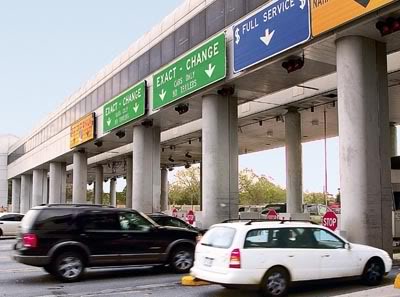The enthusiasm for unregulated markets in the last 30 years of American public policy has obscured how large pieces of infrastructure get built. Unregulated markets, to work according to their ideal, require economic actors to be able to create competing offers which are judged by consumers or buyers according to the total value they represent. Infrastructure, by its nature, involves building structures so massive that competition is considered economically inefficient, if not socially undesirable (two roads or bridges that “compete” with each other would be an eyesore and end up being much more expensive for society).
Power plants, inclusive of larger renewable energy installations, are on the smaller end of “infrastructure” but are still too massive to build “on spec.” Infrastructure, then, can only get built by large economic actors like governments or corporations opening a bidding process by which manufacturers and construction companies attempt to earn the multi-year contract to build that infrastructure.

There is however, abiding interest from both the buyer and the public in the quality and durability of infrastructure, which by its nature is supposed to last anywhere from 10 to 50 years. So a bidding process is not simply looking at the lowest total price, but at the quality of components through an engineering analysis. A formula, “cost plus reasonable profit,” is used to determine whether the bid is realistic and will produce the desired result.
Additionally, in such a long process there is also an interest in the continuing financial viability of the firm selected — if it went bankrupt in the middle of construction, it would further complicate the process. The “low-balling” of bids is then less attractive than it is in a pure market setting. While there are disadvantages to this formula, it provides a nascent or vital industry with security that pure market pricing does not.
Most of the electrical infrastructure we currently have was built several decades ago by the utilities, usually large private companies, under government regulation — or built directly by the federal government itself. Winning the contracts to build this infrastructure has involved a combination of appropriate technology and price considerations. Consulting engineering firms and government regulators try to keep bids from being padded too much, while insuring that quality standards are not endangered and that the bidding firm will remain viable.
This type of cooperation between buyer and seller is not the norm in the ideal “free” market. However, ideal free markets have rarely been involved in building the unique structures that make up most public infrastructure, nor do we have a plausible model for a free, unregulated market to do so in the future.
The cost of power is partly derived from the costs of building energy infrastructure plus a reasonable regulated profit; historically, the pricing for infrastructure and the resultant power has been arrived at through negotiations between public utilities regulators and power companies. With the vogue for markets extending to all aspects of economic life, legislators have attempted to introduce, post hoc, market competition to reduce the price of power — but these efforts have had mixed, at times disastrous, financial consequences for utilities. While in some places it has reduced the cost of power to consumers for at least a period of time, the costs of building and maintaining infrastructure have not been fully accounted for in the rush to impose market structures on the electricity system.
The continuing push toward deregulation, which still has ideological momentum despite bitter experiences in California at the beginning of the decade, does not promote the building of new infrastructure, let alone a new, reliable replacement clean-power infrastructure. Furthermore, there are few mechanisms in the current market that would accelerate the retirement of existing fossil plants for new clean energy power plants.
While neither “cost plus reasonable profit” nor unregulated market pricing is an ideal, universal pricing mechanism, there is little in this world that is ideal and universal, especially in the hotly contested area of how to pay for vital commodities and infrastructure.
Next: promoting clean energy through policy.

